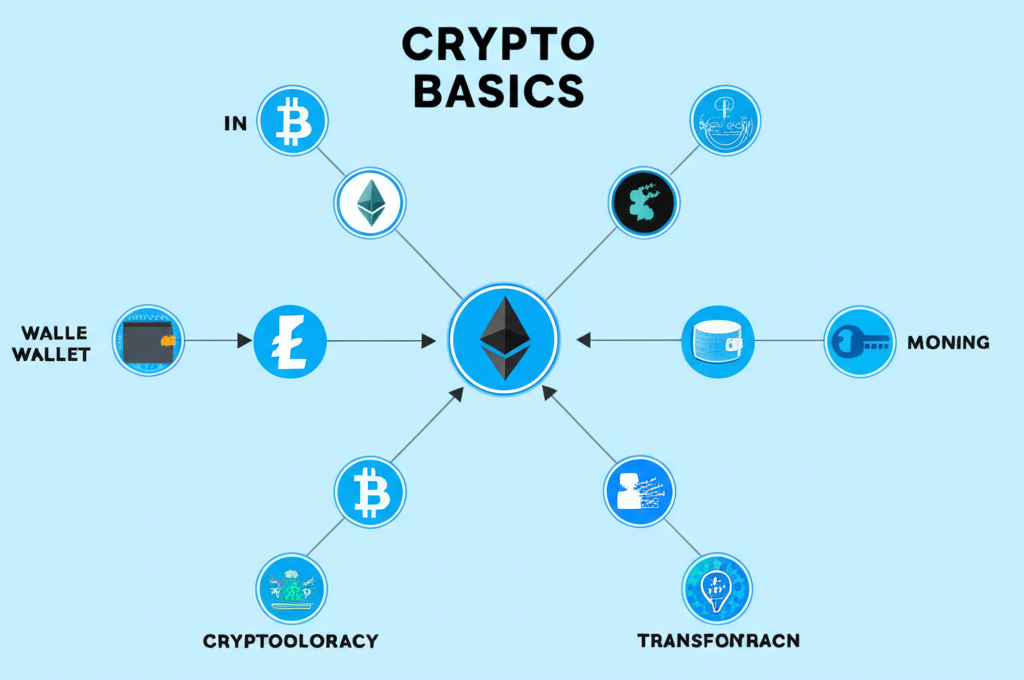What is Cryptocurrency?
Cryptocurrency is a digital or virtual form of currency that uses cryptography for security, making it difficult to counterfeit. Unlike traditional currencies issued by governments (fiat currencies), cryptocurrencies operate on decentralized systems based on blockchain technology—a distributed ledger enforced by a network of computers.
Bitcoin, created in 2009 by an unknown person or group using the pseudonym Satoshi Nakamoto, was the first cryptocurrency. Since then, thousands of alternative cryptocurrencies have been created, each with varying features and purposes.
Understanding Blockchain Technology
Blockchain is the underlying technology that powers most cryptocurrencies. It's essentially a chain of blocks, where each block contains a list of transactions. Once a block is added to the chain, the information it contains becomes extremely difficult to alter, providing security and transparency.
Key features of blockchain technology include:
- Decentralization: No single entity has control over the entire network.
- Transparency: All transactions are visible to anyone on the network.
- Immutability: Once data is recorded, it cannot be altered without consensus.
- Security: Cryptographic techniques ensure data integrity and authentication.
Types of Cryptocurrencies
There are several categories of cryptocurrencies, each serving different purposes:
- Payment Cryptocurrencies: Designed primarily as a medium of exchange (e.g., Bitcoin, Litecoin).
- Stablecoins: Cryptocurrencies pegged to stable assets like the US dollar (e.g., USDC, USDT).
- Platform Tokens: Native to blockchain platforms that support decentralized applications (e.g., Ethereum, Solana).
- Utility Tokens: Provide access to a product or service within a specific ecosystem.
- Governance Tokens: Give holders voting rights in decentralized organizations.
Key Insight
When choosing a cryptocurrency, consider its purpose, team, technology, community support, and market performance. For beginners, established cryptocurrencies like Bitcoin or stablecoins like USDC offer a good starting point.
How to Get Started
If you're new to cryptocurrency, here are the basic steps to get started:
Educate yourself
Continue learning about blockchain technology and different cryptocurrencies.
Choose a cryptocurrency
For beginners, it's often recommended to start with established cryptocurrencies like Bitcoin or stablecoins like USDC.
Set up a wallet
A cryptocurrency wallet is where you'll store your digital assets. Options include software wallets (apps), hardware wallets (physical devices), and exchange wallets.
Buy cryptocurrency
Use a platform like Green Transfer to purchase your first cryptocurrency using traditional currency.
Secure your investment
Implement proper security measures to protect your digital assets.
Risks and Considerations
While cryptocurrencies offer exciting opportunities, they also come with risks:
Volatility
Cryptocurrency prices can fluctuate dramatically in short periods.
Security
If you lose access to your wallet or private keys, you may permanently lose your assets.
Regulation
Cryptocurrency regulations vary by country and are still evolving.
Scams
The cryptocurrency space has attracted numerous scams and fraudulent projects.
It's important to only invest what you can afford to lose and to thoroughly research before making any investment decisions.
Ready to Buy Your First Cryptocurrency?
Green Transfer makes it easy to purchase USDC or USDT using your bank account or credit card.
Get Started

